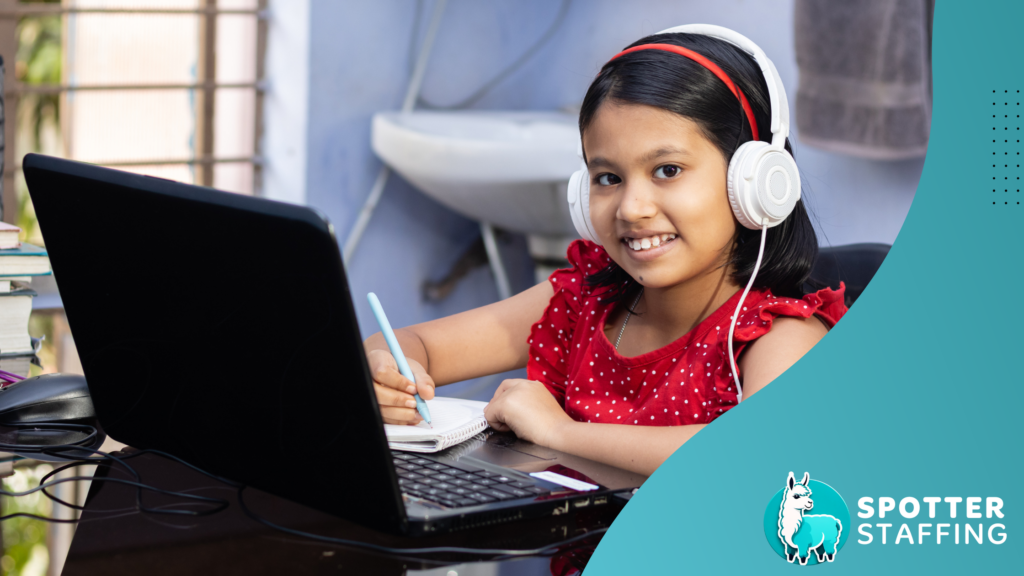Imagine a classroom where every student has the tools they need to thrive, regardless of their challenges. For special education teachers, assistive technology is a game-changer, bridging gaps and empowering students with different abilities to excel academically, socially, and emotionally.
As technology advances, so do the resources available to support your diverse learners. Whether you’re an assistive technology novice or a seasoned pro, there are innovative tools to explore this year. Let’s dive into some of the best assistive technologies that can transform your classroom.
Why Use Assistive Technology in Special Education?
Assistive technology is more than just a buzzword; it’s a lifeline for students with unique needs. By integrating assistive technology, teachers can:
- Enhance accessibility: Make learning materials and activities more inclusive, so students ability levels don’t keep them from participation and bonding with classmates.
- Boost engagement: Tailor lessons to each student’s strengths. When students can focus on not only what they like to do, but what they are good at, they will feel more engaged in the activity.
- Foster independence: Equip students with skills for lifelong success. Helping students is great, showing them how to help themselves is the most important part of special education!
From communication devices to sensory aids, these tools can revolutionize how you support students with learning disabilities, physical impairments, and sensory challenges.
1. Tools for Communication and Language Development
For nonverbal students or those with speech impairments, communication tools are essential. Try these:
- Speech-generating devices (SGDs): Devices like the Tobii Dynavox help students articulate thoughts through text-to-speech functionality.
- Augmentative and Alternative Communication (AAC) apps: Apps like Proloquo2Go offer customizable interfaces for communication.
- Picture Exchange Communication Systems (PECS): These systems help students build communication skills through visual symbols.
These tools encourage self-expression, enabling students to connect with peers, participate in class, and share their ideas.
2. Tools to Support Reading and Writing
Reading and writing are foundational skills, but they can be daunting for students with learning differences like dyslexia. Assistive tools can lighten the load:
- Text-to-speech software: Programs like NaturalReader or Kurzweil 3000 read text aloud, helping students process information.
- Speech-to-text tools: Applications like Dragon NaturallySpeaking allow students to dictate their ideas instead of typing.
- Dyslexia-friendly fonts: Tools like OpenDyslexic use weighted letters to improve readability.
- Word prediction software: Apps like Co:Writer help students complete words and phrases as they type, reducing frustration.
These technologies not only support literacy but also build confidence in struggling learners.
3. Tools for Executive Function and Organization
Students with ADHD or executive functioning challenges benefit from tools that help them stay organized and on task:
- Visual schedules: Tools like Choiceworks create clear, step-by-step guides for daily routines.
- Task management apps: Apps like Todoist and Remember The Milk teach time management skills.
- Timers and alarms: Visual timers like the Time Timer provide clear cues to keep students on track.
By fostering independence and structure, these tools can make a world of difference in student performance.
4. Tools for Sensory and Emotional Regulation
Sensory processing challenges and emotional regulation difficulties are common in special education. Assistive technology offers effective solutions:
- Noise-canceling headphones: Perfect for students overwhelmed by auditory stimuli.
- Fidget tools and apps: Physical tools like Tangle Jr. or digital options like Breathing Bubbles help students manage stress.
- Interactive sensory toys: Tools like Bouncy Bands for desks or sensory rooms equipped with LED light panels engage and calm students.
These tools not only create a supportive learning environment but also empower students to self-regulate.
5. Tools for Physical Accessibility
Students with physical disabilities often need specialized tools to participate fully in classroom activities:
- Adaptive keyboards and mice: Devices like the BIGtrack Trackball Mouse provide accessible input options.
- Switch systems: These enable students with limited mobility to interact with fun Switch technology using simple movements.
- Wheelchair-accessible desks and tools: Height-adjustable furniture ensures all students can engage comfortably.
By removing physical barriers, these tools allow every student to learn on equal footing.
How to Integrate Assistive Technology in Your Classroom
Implementing AT can feel overwhelming, but these tips can help:
- Assess student needs: Collaborate with IEP teams to determine the best tools for each student. While every student will have different goals and outcomes, you may often find similar tools and strategies can serve multiple purposes.
- Start small: Introduce one or two tools, then expand as you grow more comfortable. You don’t need to purchase or implement every change all at once, as you can overwhelm your students (and yourself!).
- Seek training: Many AT providers offer resources to help educators master their products. You may also be able to earn CEUs for trainings and developments in these areas.
- Monitor and adapt: Regularly evaluate the effectiveness of the tools and adjust as needed. Some may be a huge hit, and others may be worth a try, but you won’t know until you give anything a chance.
With thoughtful planning, you can seamlessly integrate assistive technology into your teaching strategies.
Finding the Right Support for Your Students
As vital as assistive technology is, it’s only one part of the puzzle. Ensuring your school has a team of skilled, compassionate educators and specialists is equally important.
That’s where Spotter Staffing comes in. Whether you need special education teachers, social workers, or physical therapists, we connect schools with high-quality staff who are passionate about helping students succeed.
Empower Your Classroom with Assistive Technology
Assistive technology opens doors for students with different abilities, helping them reach their full potential. From communication aids to sensory tools, there are countless options to explore this year. Make 2025 the year your classroom has the technology for every student to thrive.
Looking for a Rewarding Special Education Career?
Spotter Staffing partners with schools in Illinois and Texas to place amazing special education teachers into jobs with important benefits, paid time off, strong compensation, and so much more. If you are ready to find a special education career in a school where you can thrive, click this link to browse open jobs or contact the team at Spotter for answers to any of your job search questions. We can’t wait for you to “Join the Herd!”


